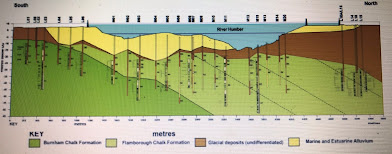I've seen a few such Studies and Reports emanating from the Capital which have referred to Hull as a coastal city.
The same scenario arose in 1913 when thoughts were foremost in the minds of the Hull Corporation Parliamentary Committee about a road and rail tunnel under the Humber Estuary.
There has always been a consensus that the North and South Banks of the Estuary would be a greater economic powerhouse if they had a permanent link. I wrote last week about proposals for a railway bridge in 1865 and many times on the subject of the magnificent Suspension Bridge that remains, in my opinion, as one of the greatest engineering feats in the UK.
The Humber Tunnel Scheme was for a route between Paull, to the East of Hull, and Goxhill on the South Bank.
As well as stitching together the Ports of Hull, Immingham and Grimsby it would also give a slightly shorter distance to London when connections were made to existing corridors of rail and highways.
An Advisory Committee was formed with some very big hitters including 15 representatives from the main participant population centres, a sprinkling of Engineering types, Contractors and of course the ever present and meddling accountants and lawyers.
Their brief was to put in place a representation as the basis for promoting a Parliamentary Bill which would be required to secure all necessary powers for compulsory purchase and funding.
Understandably the onset of the First World War placed a hold on such ambitious projects and the idea was put into mothballs until 1923.
That was when the London Company of Sir Douglas Fox and Partners, Consulting Engineers were engaged at the fee of 4000 Guineas to consider the viability of a Humber crossing, now of additional brief to provide an opinion on a bridge and a tunnel.
Fox and Partners were a prestigious operation with a pedigree of many huge Civil Projects amongst them ether directly or indirectly the Sydney Harbour Bridge (1932).
Lord Deramore, the then Lord-Lieutenant of the East Riding of Yorkshire was the Chairman.
The remit of the Consultants was to provide a Report within 3 months on the most suitable and economic means of a Humber Crossing. There were provisos that any link had to be in the vicinity of Hull. Comparative merits of a bridge or tunnel should be considered along with an idea of costs and timescale.
Such a major scheme could not be a vanity or white elephant project with the emphasis on the integration with existing interchanges and networks for the benefit of the region.
Other Hull Corporation Departments were instructed to put together other supporting documents so that the best and strongest case could be put to any Parliamentary process.
So what became of this?
Whilst the idea of a Humber Tunnel concentrated the time and resources of local politicians, business persons and planners for at least a decade there is only a brief entry in Parliamentary Records of it.
The Honourable Joseph Kenworthy, MP for Hull (1919-1931) did ask a question to the Minister of Trade on 12th February 1924 but after that the trail went cold.
It would be interesting to find out if the 4000 Guineas expended to the Consulting Engineers did actually result in the production of a Report.
As to the actual feasibility of excavating a tunnel of some 2 miles length in that specific location?
Well the geology looked reasonable as this representative cross section shows. The strata of Flamborough Chalk and Burnham Chalk lurking below the shifting alluvial and glacial deposits dod look promising.


No comments:
Post a Comment